Leadership on the cutting edge
New American Society for Biochemistry and Molecular Biology president Toni Antalis and the ASBMB go way back. Her first first-author paper as a Ph.D. student was published in the Journal of Biological Chemistry, as was a paper she co-authored with a Ph.D. student of her own that set her on her current research path studying membrane-anchored serine proteases.
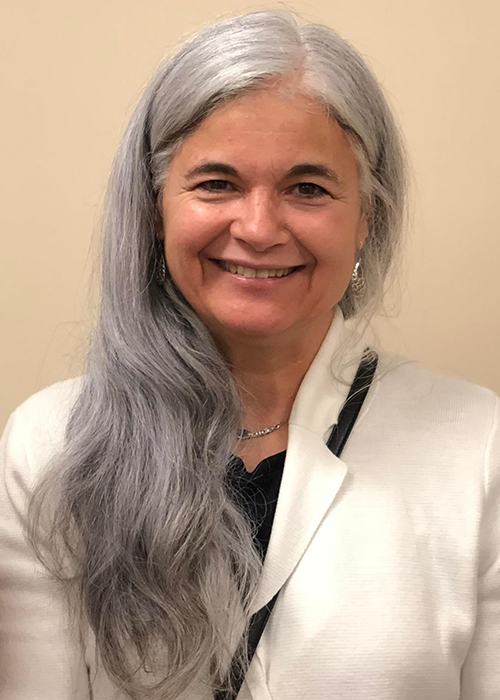
Antalis, a professor of physiology at the University of Maryland School of Medicine in Baltimore, directs the school’s Ph.D. training program in molecular medicine and is the associate director for training and education at the Marlene and Stewart Greenebaum Comprehensive Cancer Center. On the day that Antalis’ lab began gingerly to reopen after four months closed due to COVID-19, ASBMB writer Laurel Oldach spoke to the society’s new leader about her research and the challenging times ahead. Their conversation has been edited for length and clarity.
How has it been for you leading a lab during the pandemic?
For me as a PI, it has not been as bad as it has been for my students and postdocs and for others in research training. I enjoy reading and writing and catching up with the scientific literature. The story of SARS-CoV-2 has been fascinating. However, I have students who really had to put their whole theses on hold for three or four months because they could not get into the lab to start new experiments. I find that young scientists love to be in the lab doing experiments and discovering, but they don’t like to write so much. In some ways, this has been an opportunity for them to gather their thoughts, put all of their data together and think about what their research findings mean in the context of the scientific field. But they probably didn’t need this long to do that.
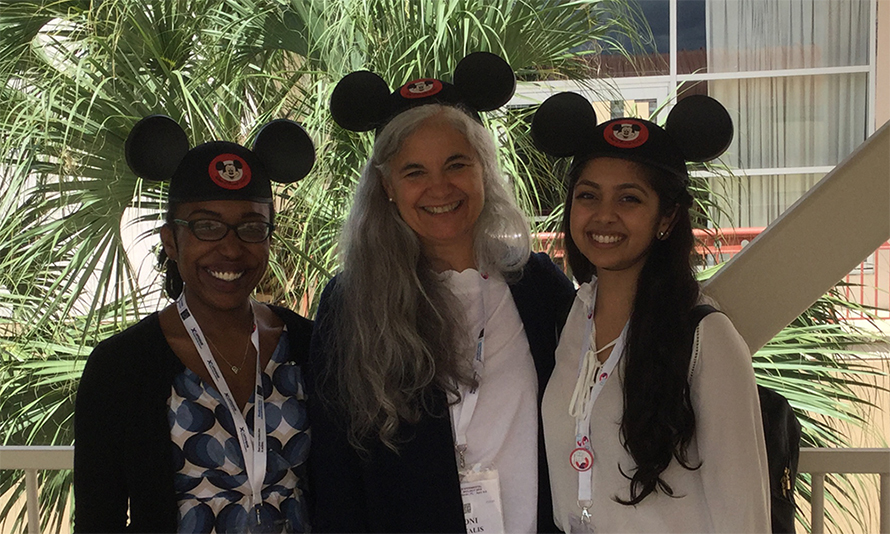
As for me, I seem to be busier with virtual meetings from home than when I was in my office. It is hard to say why, but there are always student proposals and exams, as well as organizing how teaching is to become more virtual in this new COVID-19 environment. Virtual meetings can be quite tiring — although it is good to see faces and expressions as well as have conversation. I think it calms everybody down.
We’re looking forward to being in person in the lab, though this will take time. The University of Maryland is reopening very cautiously, and there are lots of changes around the buildings to mitigate spread of the virus. We’ve set up a social distancing regimen for the lab so that everybody maintains six feet of distance, wears gloves and masks when appropriate, and has access to plenty of sanitizers. In our building, a special antiviral adhesive has been put on all the door handles and frequently used push buttons — this seems a neat invention.
As you get back into the lab, what research questions are you most excited about working on?
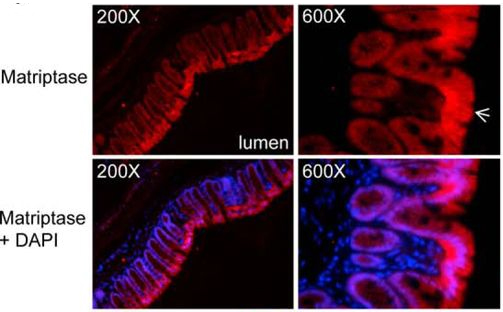
My research interests are in proteases and protease-activated signaling pathways that affect tumor metastasis, inflammation and vascular biology. We are studying several inflammatory mechanisms that promote the resolution of venous thrombosis, in order to accelerate the process and potentially avoid surgical intervention.
We also study how membrane-anchored serine proteases function to promote the dissemination and spread of ovarian cancers and affect their responses to chemotherapy. While chemotherapy will kill tumor cells, tumors can become resistant to these treatments, and this is a problem because alternative effective therapeutic options are limited. We use pre-clinical mouse models of human ovarian cancer dissemination and spread to better understand molecular mechanisms that we might be able to exploit for alternative treatments. As we are always looking for ways to translate our basic research findings to the clinic, we are working on a potential prodrug therapy using a mutated anthrax toxin to target and kill ovarian tumor cells.
How does the anthrax toxin work?
One of the anthrax toxin proteins binds to specific receptors on human cells where it is proteolytically processed by human proteases, allowing it to form a pore that enables toxic peptides to enter and kill cells. We have engineered a toxin that takes advantage of the overactivity of membrane-anchored serine proteases on the surface of ovarian tumor cells and limits the growth of the cancer cells in ovarian cancer and likely many other cancers.
President's message
How did you first get interested in serine proteases?
As a postdoctoral fellow. I cloned a serine protease inhibitor of the plasminogen activation cascade, known as PAI-2/SerpinB2, and that began my interest in fibrinolysis, the process of blood clot dissolution.
When the genome was sequenced at the turn of the century, I was working at Queensland Institute of Medical Research in Brisbane, Australia. My graduate student John Hooper and I noticed that there was a family of serine proteases that anchor directly on cell membranes. We published a review on this protein family in JBC in 2001, and we’ve been trying to better understand what these proteases do ever since. In fact, one of these, TMPRSS2, is an activator of the SARS-CoV-2 virus, and inhibitors of this protease are in clinical trials. The growth in this field led to a 2015 ASBMB Special Symposium on Membrane Anchored Serine Proteases, which is now held every two to three years.
JBC was key to how you got involved in ASBMB leadership, right?
I have had a longstanding relationship with the journal and the society. I was invited to join the editorial board of JBC in 2003 by Dr. Judy Bond, an associate editor, and was elected to serve as a member of the ASBMB Publications Committee in 2006. I was chair of the committee from 2008 to 2011, and in 2011, I was elected treasurer of the society; I served in that capacity for six years. So, yes, I’ve been involved with the ASBMB for a long time, and I’ve watched it progress and evolve over the years. It’s a really impressive society. I am proud of the ways in which the ASBMB serves the needs of the scientific community by promoting science advocacy, communication, education and outreach and how it invests in the careers of junior scientists.
As president, what do you see as the way forward for the society?
I believe a number of challenges are facing not only this society but all scientific societies in the next few years. The ASBMB is remarkably well positioned to meet these head-on. I look forward to working with the society leadership, the membership and all of the staff to help keep the society moving forward and continuing to innovate.
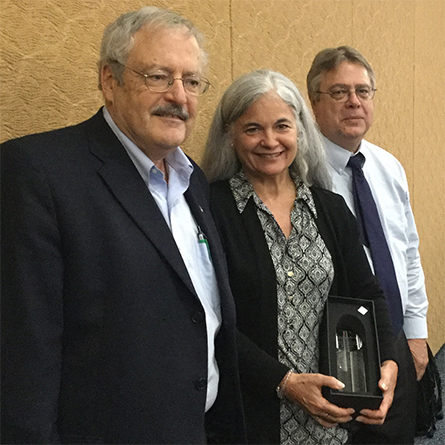
One major change this year is the transition of the ASBMB journals to gold open access. This is an important step. As scientists, we all want scientific literature openly accessible to all members of the scientific community, but at the same time it is important to develop a workable finance structure that maintains the quality, transparency and rigor that are the hallmark of the ASBMB journals.
Another challenge we face these days is the importance of not politicizing science. Scientific societies play an important role in trying to prevent politicization of science funding and of scientific results. In the next few years, given the persistence of COVID-19 and the uncertain economy, maintaining financial support for scientific research and supporting funding agencies like the National Institutes of Health is going to be critical.
Years of basic research in diverse fields have made it possible to move fast in developing a vaccine for SARS-CoV-2. For example, we know about TMPRSS2 because of cancer research, ACE2 because of research in vascular biology, the SARS-CoV-2 protein structures and genomics because of biochemistry and molecular biology — all research is important in the middle of a pandemic. We need to support our society members so they can continue to do important groundbreaking research.
In these times, scientific advocacy is crucial. We want to maintain support, stability, fairness and good practices in science and throughout the community. Supporting young people so they can progress in their science careers is important, and the more we can advocate for the next generation, the better it will be for the scientific community and for research as a whole.
This is also a crucial time for facing America’s legacy of racism. Scientific societies can play a pivotal role in advocating for broader access to and equity in STEM. Communication is key. I want to hear from all members of the society and make sure that all ASBMB leaders are aware of their issues and perspectives so we can move forward in the best possible and most strategic way.
What do you enjoy doing in your time outside of working hours? What do you do to recharge?
I can highly recommend yoga; it’s so good for relieving stress. I try to do other exercise too, but yoga is my favorite. My family includes two rescue cats that keep me busy — they’re about 2 years old now. I do a fair bit of reading of news stories and analyses, and I also belong to a book club, which allows for interesting discussions and many different perspectives. We recently read “Bad Blood: Secrets and Lies in a Silicon Valley Startup,” the bizarre story about the rise and fall of the biotech company Theranos — and a lesson in the importance of ethics.
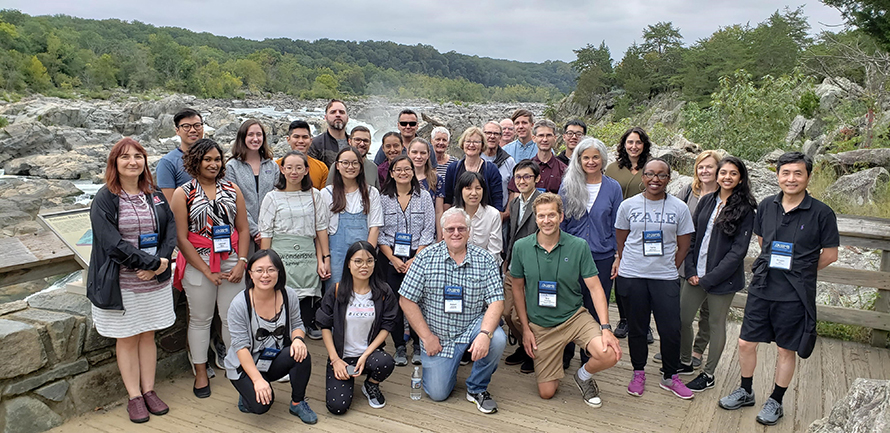
Enjoy reading ASBMB Today?
Become a member to receive the print edition four times a year and the digital edition monthly.
Learn moreGet the latest from ASBMB Today
Enter your email address, and we’ll send you a weekly email with recent articles, interviews and more.
Latest in People
People highlights or most popular articles

ASBMB names 2026 fellows
The American Society for Biochemistry and Molecular Biology announced that it has named 16 members as 2026 fellows of the society.

ASBMB members receive ASM awards
Jennifer Doudna, Michael Ibba and Kim Orth were recognized by the American Society for Microbiology for their achievements in leadership, education and research.

Mining microbes for rare earth solutions
Joseph Cotruvo, Jr., will receive the ASBMB Mildred Cohn Young Investigator Award at the ASBMB Annual Meeting, March 7–10, just outside of Washington, D.C.

McKnight wins Lasker Award
He was honored at a gala in September and received a $250,000 honorarium.

Building a stronger future for research funding
Hear from Eric Gascho of the Coalition for Health Funding about federal public health investments, the value of collaboration and how scientists can help shape the future of research funding.

Fueling healthier aging, connecting metabolism stress and time
Biochemist Melanie McReynolds investigates how metabolism and stress shape the aging process. Her research on NAD+, a molecule central to cellular energy, reveals how maintaining its balance could promote healthier, longer lives.

